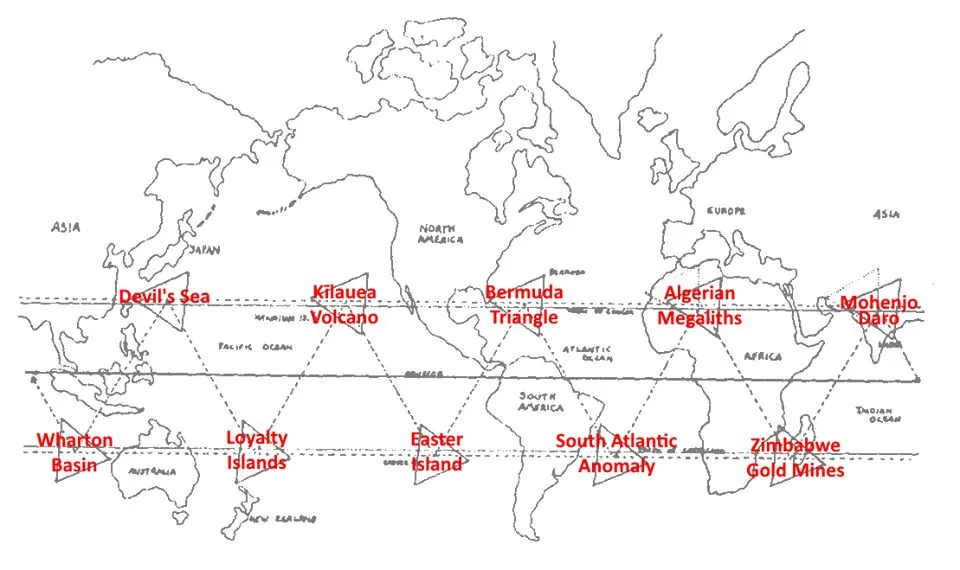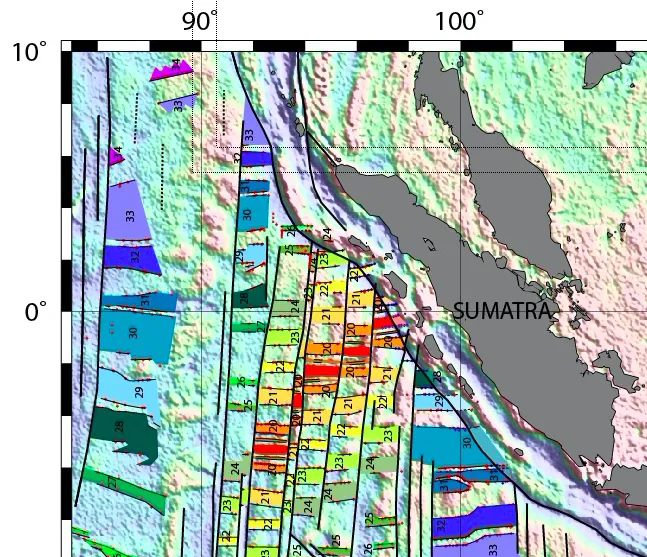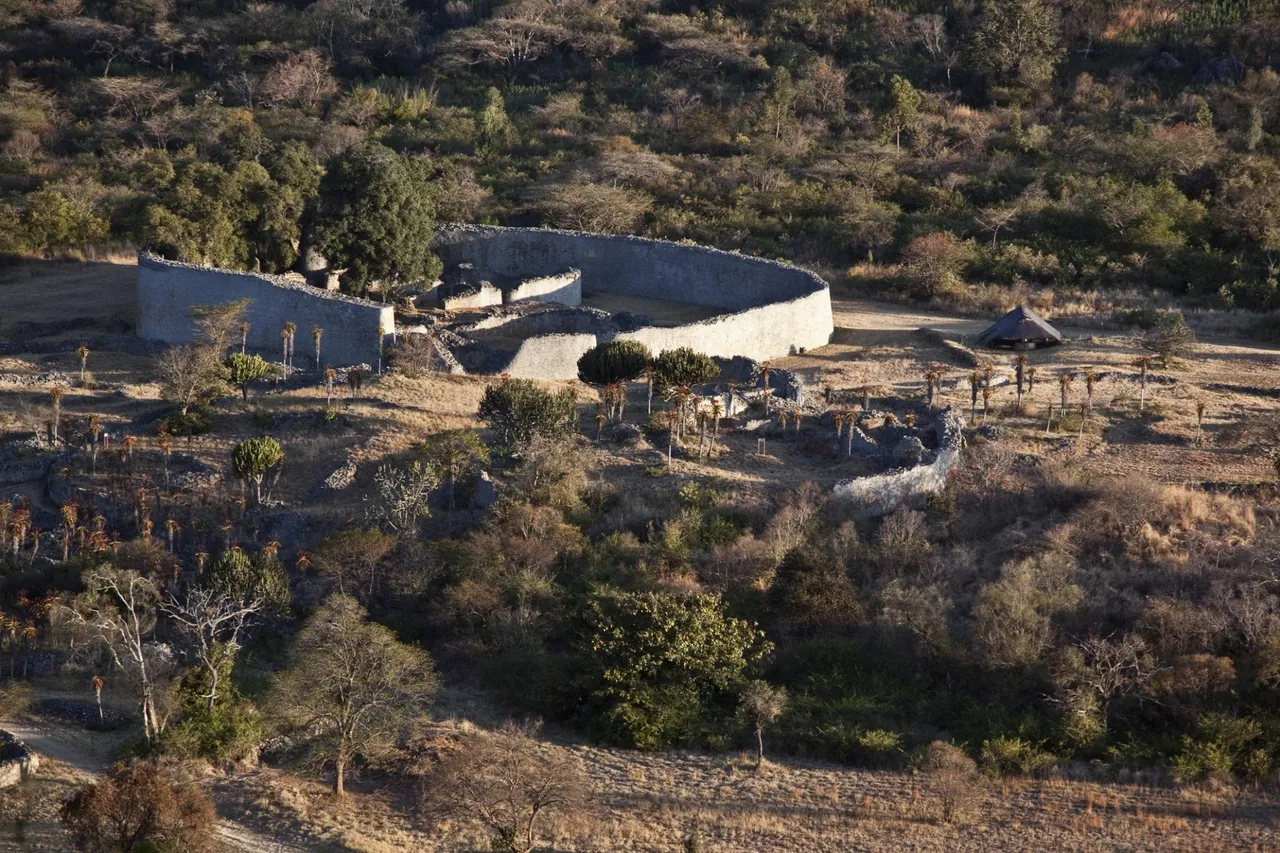Lets continue to uncover more about these ten mysterious places worldwide.
I had this old image saved back in 2014, and I decided to make a higher quality version. First I found the earliest version of the image and added higher quality text. I then had to locate each of these places, some I knew about and some were not quite what I had thought they were.
This is the 10 Vile Vortices worldwide!

1. Wharton Basin
"“The Wharton Basin is an important geological site because in 2012 we had two very large earthquakes, M 8.6 and M 8.2, occur there. The sizes of these earthquakes were big — the M 8.6 was the largest intraplate earthquake ever recorded,” said Dr Hananto."
"“It seems to me that the M 9.2 earthquake in 2004 induced enough stress on the Indo-Australian plate that it may have triggered the 2012 earthquakes,” Dr Hananto said. “The 2012 earthquakes then created seismic movements so large that they may have caused even more stress to the subduction zone."

This screen shot from Dr Jerome Dyment’s computer shows how younger, more buoyant lithosphere is resisting subduction west of Sumatra. This resistance may be one explanation for the recent strong earthquakes this area has been experiencing over the past several decades. (Source: Dr Jerome Dyment, IPGP)
"One of the root causes of all this activity could be the age of the lithosphere, that ever-spreading, always-moving seafloor crust. “South of eastern Java,” Dr Dyment said, pointing to a brightly coloured map on his computer, “the lithosphere is about 120 million years old. South of western Java, it’s younger, maybe 80 million years old. But alongside Sumatra, the crust is much younger, as young as 45 million years old. And then, of course, on the other side of that, things start aging again."
"The discovery of a conjugate system of faults in the Wharton Basin intraplate deformation zone" https://advances.sciencemag.org/content/3/1/e1601689
2. Devils Sea (Devils Triangle)
"In 4 January 1955, Japanese ship Shinyo Maru No. 10 (第十伸洋丸) lost radio contact near Mikura-jima; Japanese newspapers began to label the location as ma no umi until the ship was found safe on 15 January.
Yomiuri Shimbun showed a map of the sea with points of several other ships that had been lost in recent years, and stated that those ships were lost within the area that the Yokohama Coast Guard Office had classified as a special danger area. In the U.S., The New York Times introduced this incident with the term "The Devil's Sea," where nine ships had been lost in perfect weather."

"Another explanation for this "paranormal" activity could be the undersea volcanoes that are very common in this area. It is quite characteristic for small islands in the Dragon's Triangle to frequently disappear and new islands appear due to both volcanoes and seismic activity."
3. Loyalty Islands

https://books.google.ca/books?id=vqLyCAAAQBAJ&pg=PA525&lpg=PA525&dq=loyalty+islands+anomaly
Myths of origins and the deluge
"Apparently one of the clearest characteristics of the mythology of the Melanesian area is the almost total lack of myths relating to the origin of the world. With one or two exceptions, the earth seems to be regarded as having always existed in very much the same form as today. In the Admiralty Islands a portion of the population believed that once there was nothing but a widespread sea; and one myth states that in this sea swam a great serpent, who, desiring a place on which he might rest, called out, "Let the reef rise!", and the reef rose out of the ocean and became dry land.
Another version differs in that a man and a woman, after having floated upon the primeval sea, climbed upon a piece of driftwood and wondered whether the ocean would dry up or not. At last the waters wholly retired, and land appeared covered with hills, but barren and without life; whereupon the two beings planted trees and created foods of various sorts. In New Britain, among the coastal tribes of the Gazelle Peninsula, we find the familiar story of the fishing of the land from the bottom of the sea, a task which was accomplished by the two culture hero brothers, To-Kabinana and To-Karvuvu, some of whose other deeds will be recounted later. The same story in slightly greater detail is found also in the southern New Hebrides. This conception of a primeval sea is found widely in central Polynesia, Micronesia, and Indonesia, and it is perhaps significant that it apparently occurs in Melanesia only on its northern margin, where contact with non-Melanesian peoples would theoretically be expected. A much closer affiliation with Polynesia is shown, however, in another class of origin-myths to which we may now turn.
If there is little interest in the beginning of the world in the Melanesian area, the same cannot be said of the origin of mankind, for on this subject there is considerable and widely variant material. Three types of myths may be recognized: one, that in which mankind is directly created by some deity or pre-existing being; second, that in which man comes into being spontaneously or magically; and, third, that where mankind descends to earth from the sky-land."
4. Hamakulia Volcano Hawaii ( Kīlauea )
"the bad mojo associated with this area of the world centers around the volcano named Hamakulia on the southeast side of the island. According to scientists, the trouble spot is actually in the ocean itself northeast of Hawaii halfway between the Murau Fracture Zone and the Molokai Fracture Zone."
Science. 1966 Jul 29;153(3735):521-2.
Molokai fracture zone: continuation west of the hawaiian ridge.
Malahoff A, Strange WE, Woollard GP.
Abstract https://www.ncbi.nlm.nih.gov/pubmed/17830364
The Molokai Fracture Zone is one of the principal east-west (striking) fracture zones between California and the mid-Pacific. On the basis of bathymetry alone, it has been assumed that the zone ended abruptly east of the Hawaiian Islands. Use of correlation techniques between bathymetric features and their magnetic anomalies in the vicinity of the islands now show that structural elements of the zone cross the islands and continue westward for at least 130 kilometers. Recent volcanism and deep rift zones of the islands parallel the zone, suggesting structural correlation between the strike of the zone and the origin of recent volcanism in the islands.

"It still remains to explain, though, what could generate a long-lived melting anomaly (hotspot) like Hawaii, starting with tectonically-induced excess volcanism at Meiji seamount."
http://www.mantleplumes.org/Hawaii2.html

"Buxton was one of thousands of residents forced to evacuate their homes in Puna when lava started flowing from a fissure system along Kīlauea Volcano’s East Rift Zone on May 3, 2018. "

https://www.hawaiipublicradio.org/post/puna-rebuilds-six-months-after-k-lauea-eruption
5. Easter Island

"Many archaeologists suggest that "[the] statues were thus symbols of authority and power, both religious and political. But they were not only symbols. To the people who erected and used them, they were actual repositories of sacred spirit. Carved stone and wooden objects in ancient Polynesian religions, when properly fashioned and ritually prepared, were believed to be charged by a magical spiritual essence called mana." Archaeologists believe that the statues were a representation of the ancient Polynesians' ancestors. The moai statues face away from the ocean and towards the villages as if to watch over the people. The exception is the seven Ahu Akivi which face out to sea to help travelers find the island. There is a legend that says there were seven men who waited for their king to arrive"
https://en.wikipedia.org/wiki/Moai
"In the 2005 book “Collapse” by UCLA anthropologist Jared Diamond, he shows Polynesians settling on the island at around AD 800, they choosing this remote, cool, and dry island to settle on with little thought of the consequences for farming and agriculture."

"In his theory, these the inhabitants did indeed create the statues we see today, but the reason their society broke down was their cutting down of all the trees on the island without realizing that they wouldn’t grow back quickly enough to maintain the environment. Once a tree is cut down on this island, it takes one whole heck of a lot more time to grow back than it does in a place that isn’t ravaged by high winds and volcanic ash. Once the trees were cut down, the topsoil blew away and was destroyed, the people were forced to eat birds (all of the birds, as it were), then eventually each other. Once the Dutch arrived in 1722 on Easter Sunday, they found the inhabitants to have descended into barbarism."
https://www.slashgear.com/easter-island-statues-get-new-theories-from-natgeo-22235313/
6. Bermuda Triangle

"a loosely-defined region in the western part of the North Atlantic Ocean, where a number of aircraft and ships are said to have disappeared under mysterious circumstances. Most reputable sources dismiss the idea that there is any mystery. The vicinity of the Bermuda Triangle is amongst the most heavily traveled shipping lanes in the world, with ships frequently crossing through it for ports in the Americas, Europe and the Caribbean islands. Cruise ships and pleasure craft regularly sail through the region, and commercial and private aircraft routinely fly over it."
"Newly-found craters off the coast of Norway suggest the sea’s potential for enormous blowouts of methane gas, the scientists said, adding some credence to an idea that has been floated before. The theory is that gas bubbles rising to the surface could sink an unfavorably-positioned ship, some scientists have speculated, though a proven case of that happening has never been recorded."
https://www.atlasobscura.com/articles/have-scientists-cracked-the-mystery-of-the-bermuda-triangle
7. The South Atlantic Anomaly
"Even before the cover opened, the Multi-angle Imaging SpectroRadiometer (MISR) instrument aboard NASA's Terra spacecraft began making scientific measurements. The MISR cameras, designed to detect visible light, are also sensitive to radiation in Earth's upper atmosphere. With the cover closed, the effects of this radiation stand out. This map was created by specially processing MISR “dark” data taken over two weeks in February, 2000, while the cover was still closed. The South Atlantic Anomaly, a region of high levels of radiation over the south Atlantic and parts of South America, is clearly visible."
"The South Atlantic Anomaly (SAA) is an area where the Earth's inner Van Allen radiation belt comes closest to the Earth's surface, dipping down to an altitude of 200 kilometres (120 mi)."

The South Atlantic Anomaly (SAA) – likened by NASA to a 'dent' in Earth's magnetic field, or a kind of 'pothole in space' – generally doesn't affect life on Earth, but the same can't be said for orbital spacecraft (including the International Space Station), which pass directly through the anomaly as they loop around the planet at low-Earth orbit altitudes.
https://www.sciencealert.com/nasa-is-tracking-the-mysterious-evolving-anomaly-in-earth-s-magnetic-field

Satellite data suggesting the SAA is dividing. (Division of Geomagnetism, DTU Space)
8. Algerian Megaliths

"Tassili n'Ajjer is a national park in the Sahara desert, located on a vast plateau in south-east Algeria, covering an area of over 72,000 km2 (28,000 sq mi). It has one of the most important groupings of prehistoric cave art in the world, and was inducted into UNESCO's World Heritage Site list in 1982."
https://en.wikipedia.org/wiki/Archeology_in_Algeria

"https://en.wikipedia.org/wiki/Tassili_n%27Ajjer"
9. Ancient Zimbabwe Gold Mines
The Zimbabwe mining legacy dates back to medieval Great Zimbabwe. 4 000 gold and 500 copper mines spread across the country. https://www.thepatriot.co.zw/old_posts/history-of-pre-colonial-mining-in-zimbabwe/

"Great Zimbabwe comprises two focal points. There is the so-called hill complex, which is located on the hill where the kings and the royals resided for most of the time. There is also the valley complex, which housed the ordinary citizens of this town of perhaps 20,000 people. The valley complex also included the most impressive single ruin, the high-walled Great Enclosure."
https://www.thegreatcoursesdaily.com/great-zimbabwe/
The walls of The Great Enclosure

"The Great Enclosure has an outer wall that runs in an elliptical shape for approximately 700 feet. The greatest space between the edges of the walls is approximately 300 feet across. The walls themselves are 30–35 feet high and sometimes decorated at the top—or, in other cases, even midway—by coursing. Coursing is the word for layering of stone in decorative patterns. The largest walls at the base are some 15 feet thick, and they are solid throughout; there’s no cavity in them, although they taper upward and, therefore, narrow as they reach the top. This is the largest single structure by a considerable margin in precolonial sub-Saharan Africa."
The Conical Tower inside the Great Enclosure at Great Zimbabwe

"The Great Enclosure, with its passageways, stairs, and inner chamber surrounding the so-called Conical Tower, 30 feet high and approximately 20 feet wide at its base, was likely the political and indeed the religious focal point of the nation. Archaeologists speculated that at certain moments (harvest festivals, religious rites, etc.), the kings probably descended from the hill complex and carried out these practices inside the Great Enclosure and most likely around the Conical Tower."
https://www.thegreatcoursesdaily.com/great-zimbabwe/
10 Mohenjo Daro

"The Indus Valley civilization was entirely unknown until 1921, when excavations in what would become Pakistan revealed the cities of Harappa and Mohenjo Daro " "During its heyday from about 2500 to 1900 B.C., the city was among the most important to the Indus civilization, Possehl says"https://www.nationalgeographic.com/archaeology-and-history/archaeology/mohenjo-daro/
"It was one of the largest cities of the ancient Indus Valley Civilization, also known as the Harappan Civilization, which developed around 3,000 BCE from the prehistoric Indus culture. At its height, the Indus Civilization spanned much of what is now Pakistan and North India, extending westwards to the Iranian border, south to Gujarat in India and northwards to an outpost in Bactria, with major urban centers at Harappa, Mohenjo-daro, Lothal, Kalibangan, Dholavira and Rakhigarhi. Mohenjo-daro was the most advanced city of its time, with remarkably sophisticated civil engineering and urban planning. When the Indus civilization went into sudden decline around 1900 BCE, Mohenjo-daro was abandoned"
"The city also had large platforms perhaps intended as defense against flooding.[19] According to a theory first advanced by Wheeler, the city could have been flooded and silted over, perhaps six times, and later rebuilt in the same location. For some archaeologists, it was believed that a final flood that helped engulf the city in a sea of mud brought about the abandonment of the site"
https://en.wikipedia.org/wiki/Mohenjo-daro
==================================
10 Vile Vortices!
Original Image

Updated

That's all 10!
If you know anything more about
any of these places, please comment below!

